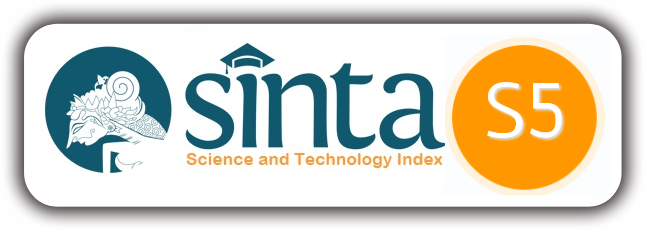ANALISIS POTENSI SEKTOR BASIS DAN NON BASIS KOTA SABANG TAHUN 2013-2019
DOI:
https://doi.org/10.22373/jai.v6i1.608Abstract
The success of a region in improving its economy can be measured by the growth of Gross Domestic Regional Product (GDRP) from various existing sectors. This Gross Domestic Regional Product (GDRP) growth occurs if the region has a leading sector or a basic sector whose growth rate is relatively fast and has strong competitiveness and a non-basic sector that has the opportunity to become a basic sector if the local government is able to condition the opportunities that exist into an optimal result. This study uses secondary data obtained from the Central Statistics Agency (BPS) of Aceh Province in the form of time series data for 7 years, namely the 2013-2019 period. This research was conducted to identify the basic and non-basic sectors in the economic structure of the City of Sabang for the period 2013 - 2019 using the LQ (location quotient) analysis method, the Dynamic Location Quotient (DLQ) method, Shift Share Analysis, and quadrant analysis. 10 basic sectors with the highest average index value SLQ ≥ 1 and 7 sectors which are non-basic sectors with index numbers <1. In the quadrant analysis from the results of the existing Shift-Share calculations, there are 3 sectors in Quadrant I with fast and strong growth,3 sectors in Quadrant II with slow and strong growth, and 11 sectors in Quadrant III with fast growth but have weak competitiveness
Published
How to Cite
Issue
Section
License
Authors who publish with this journal agree to the following terms:
- Authors retain copyright and grant the journal right of first publication with the work simultaneously licensed under a Creative Commons Attribution License (CC-BY-SA) that allows others to share the work with an acknowledgment of the work's authorship and initial publication in this journal (See The Effect of Open Access);
- Authors are permitted and encouraged to post their work online (e.g., in institutional repositories or on their website) prior to and during the submission process, as it can lead to productive exchanges, as well as earlier and greater citation of published work;
- Authors are able to enter into separate, additional contractual arrangements for the non-exclusive distribution of the journal's published version of the work (e.g., post it to an institutional repository or publish it in a book), with an acknowledgment of its initial publication in this journal.
















